Do you cringe at the thought of trimming your dog’s nails, fearing a wrestling match with your furry friend? You’re not alone.
Many pet owners struggle with this task, as dogs can become anxious or even aggressive during nail trims.
But fear not!
With a deeper understanding of your dog’s psychology and some helpful tips, you can make nail trimming a stress-free experience for both you and your canine companion.
Contents Overview
Understanding Your Dog's Nail Trimming Anxiety
Dog nail trimming anxiety can stem from various factors, including:
Negative Experiences
Dogs may develop anxiety around nail trimming if they have had previous negative experiences, such as accidentally cutting the quick (the sensitive tissue inside the nail) or experiencing discomfort during the process.
Sensitivity
Some dogs have particularly sensitive paws or nails, which can make nail trimming a painful or uncomfortable experience for them.
Lack of Desensitization
Dogs who have not been properly desensitized to having their paws handled may perceive nail trimming as a threat or invasion of their personal space.
Fear of Tools
The sight, sound, or vibration of nail clippers or grinders can trigger fear or anxiety in some dogs, especially if they have not been exposed to these tools before.
By understanding the underlying causes of your dog’s nail-trimming anxiety, you can tailor your approach to address their specific needs and concerns.
Signs of Nail Trimming Anxiety in Dogs
Recognizing the signs of nail-trimming anxiety in dogs is crucial for addressing their discomfort and ensuring a positive grooming experience.
Here are some common signs that indicate your dog may be experiencing anxiety during nail trimming:
Resistance or Avoidance:
- Your dog may try to pull away, hide, or resist having their paws handled when you attempt to trim their nails.
- Your dog may try to pull away, hide, or resist having their paws handled when you attempt to trim their nails.
Restlessness or Agitation:
- Dogs experiencing anxiety may display signs of restlessness or agitation, such as pacing, whining, or panting, during nail trimming sessions.
- Dogs experiencing anxiety may display signs of restlessness or agitation, such as pacing, whining, or panting, during nail trimming sessions.
Licking or Chewing Paws:
- Excessive licking or chewing of the paws may indicate that your dog is feeling stressed or anxious about nail trimming.
- Excessive licking or chewing of the paws may indicate that your dog is feeling stressed or anxious about nail trimming.
Elevated Stress Signals:
- Watch for signs of stress or discomfort, including dilated pupils, trembling, drooling, or panting excessively.
- Watch for signs of stress or discomfort, including dilated pupils, trembling, drooling, or panting excessively.
Growling or Snapping:
- In severe cases, dogs may exhibit aggressive behaviors such as growling, snapping, or attempting to bite when their nails are being trimmed.
- In severe cases, dogs may exhibit aggressive behaviors such as growling, snapping, or attempting to bite when their nails are being trimmed.
Freezing or Stiffening:
- Some dogs may freeze or stiffen their body posture when you attempt to trim their nails, indicating discomfort or fear.
- Some dogs may freeze or stiffen their body posture when you attempt to trim their nails, indicating discomfort or fear.
Hiding or Avoidance Behaviors:
- Dogs may try to hide or avoid nail trimming sessions altogether, seeking refuge in a secluded area of the house.
- Dogs may try to hide or avoid nail trimming sessions altogether, seeking refuge in a secluded area of the house.
Vocalization:
- Whimpering, yelping, or vocalizing in distress during nail trimming are clear indicators that your dog is feeling anxious or uncomfortable.
By observing these signs and understanding your dog’s body language, you can take appropriate measures to address their nail-trimming anxiety effectively.
Patience, positive reinforcement, and gradual desensitization are key strategies for helping your dog overcome their fear and make nail trimming a more comfortable experience for both of you.
Tips for Overcoming Nail Trimming Anxiety
Regular nail trimming for dogs is essential to prevent issues like discomfort, difficulty walking, and potential injuries. Mastering the proper technique for dog nail trimming ensures a stress-free experience for both you and your furry friend.
Ease your dog’s nail-trimming worries with these helpful tips for overcoming anxiety during the process.
Desensitization and Counterconditioning:
- Start by gradually acclimating your dog to the nail-trimming process by touching their paws and nails regularly, even when you’re not trimming.
- Offer treats and praise to create positive associations with paw handling and nail trimming.
- Progress slowly, gradually introducing nail clippers or grinders once your dog is comfortable with paw handling.
Choose the Right Tools:
- Use high-quality nail clippers or grinders specifically designed for dogs.
- Opt for tools with safety features, such as safety guards or sensors, to prevent overcutting and reduce the risk of injury.
- Learning how to trim your dog’s nails safely is crucial to avoid causing pain or injury to your pet.
Start Slow and Be Patient:
- Begin with short nail trimming sessions, focusing on one or two nails at a time.
- Gradually increase the duration and number of nails trimmed as your dog becomes more comfortable.
- Be patient and allow your dog to progress at their own pace.
Positive Reinforcement:
- Use positive reinforcement techniques, such as offering treats, praise, and affection, during and after nail trimming sessions.
- Reward calm behavior and cooperation to reinforce positive associations with the process.
Stay Calm and Confident:
- Dogs can sense their owner’s emotions, so it’s essential to remain calm and confident during nail trimming.
- Speak in a soothing tone and avoid displaying frustration or anxiety, as this can escalate your dog’s stress levels.
Use Distraction Techniques:
- Offer your dog a favorite toy or treat to keep them occupied during nail trimming.
- Distraction can help redirect their focus and reduce anxiety during the process.
Seek Professional Help if Needed:
- If you’re struggling to manage your dog’s nail-trimming anxiety on your own, don’t hesitate to seek assistance from a professional groomer or veterinarian.
- They can provide guidance, support, and, if necessary, sedation options to ensure your dog’s nails are trimmed safely and effectively.
Consider Alternative Nail Trimming Methods:
- If traditional nail trimming methods are too stressful for your dog, explore alternative options such as nail filing or using a Dremel tool.
- These methods may be less intimidating for dogs who are fearful of clippers or grinders.
Bottom Line
Identifying signs of overgrown nails in dogs is vital to prevent discomfort and potential health issues.
Implementing safety precautions, such as proper restraint and avoiding the quick, can minimize the risk of accidents during dog nail trimming sessions.
By understanding your dog’s psychology and implementing positive training techniques, you can conquer nail-trimming anxiety and turn it into a bonding experience.
Patience, consistency, and a gentle approach are key to helping your furry friend feel comfortable and secure during nail trims. With time and practice, you’ll learn to tackle this grooming task with confidence and ease.
So, take a deep breath, grab those clippers, and embark on the journey to stress-free nail trimming!


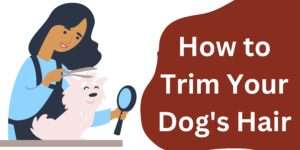
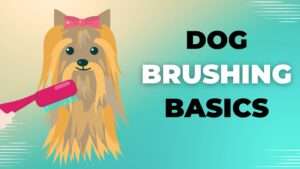
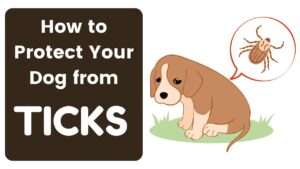
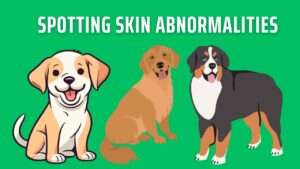

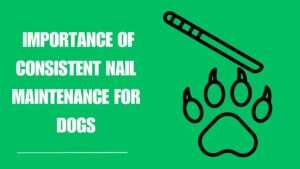
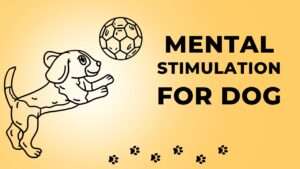

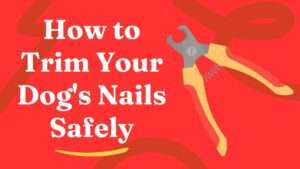
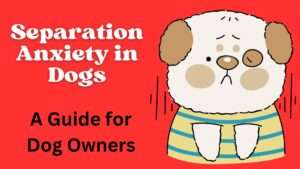




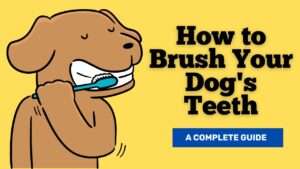
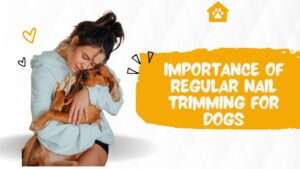

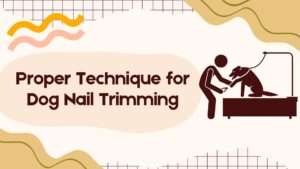
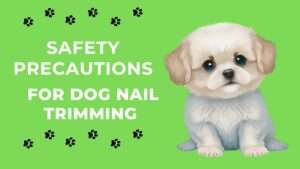
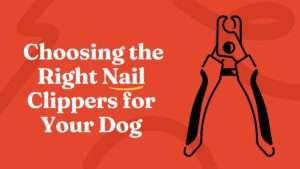

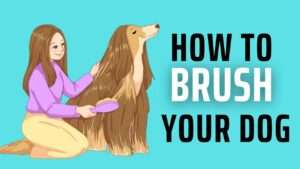








+ There are no comments
Add yours